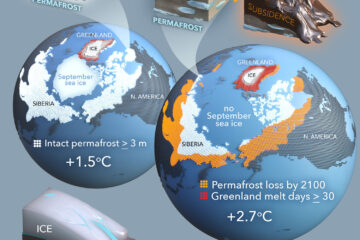Wide distribution of autochthonous branched glycerol dialkyl glycerol tetraethers (bGDGTs) in US Great Basin hot springs
Branched glycerol dialkyl glycerol tetraethers (bGDGTs) are membrane-spanning lipids that likely stabilize membranes of some bacteria. Although bGDGTs have been reported previously in certain geothermal environments, it has been suggested that they may derive from surrounding soils since bGDGTs are known to be produced by soil bacteria. To test the hypothesis that bGDGTs can be produced by thermophiles in geothermal environments, we examined the distribution and abundance of bGDGTs, along with extensive geochemical data, in 40 sediment and mat samples collected from geothermal systems in the U.S. Great Basin (temperature: 31–95◦C; pH: 6.8–10.7). bGDGTs were found in 38 out of 40 samples at concentrations up to 824 ng/g sample dry mass and comprised up to 99.5% of total GDGTs (branched plus isoprenoidal). The wide distribution of bGDGTs in hot springs, strong correlation between core and polar lipid abundances, distinctness of bGDGT profiles compared to nearby soils, and higher concentration of bGDGTs in hot springs compared to nearby soils provided evidence of in situ production,
particularly for the minimally methylated bGDGTs I, Ib, and Ic. Polar bGDGTs were found almost exclusively in samples ≤70◦C and the absolute abundance of polar bGDGTs correlated negatively with properties of chemically reduced, high temperature spring sources (temperature, H2S/HS−) and positively with properties of oxygenated, low temperature sites (O2, NO−3). Two-way cluster analysis and nonmetric multidimensional scaling based on relative abundance of polar bGDGTs supported these relationships and showed a negative relationship between the degree of methylation and temperature, suggesting a higher abundance for minimally methylated bGDGTs at high temperature. This study presents evidence of the widespread production of bGDGTs in mats and sediments of natural geothermal springs in the U.S. Great Basin, especially in oxygenated, low-temperature sites (70◦C).


